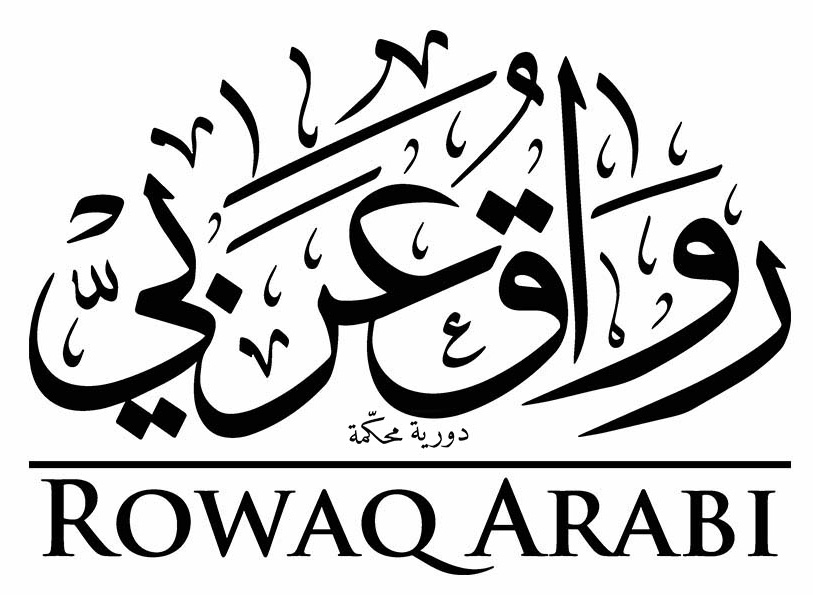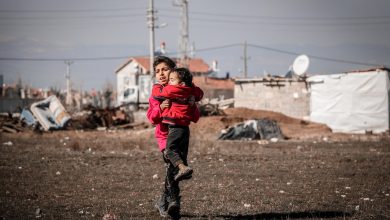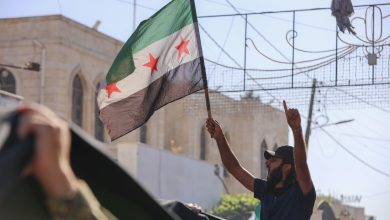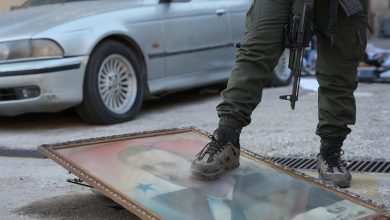Views: Arab Human Rights Under Layers of Suppression

Citation: Springborg, Robert (2024) ‘Views: Arab Human Rights Under Layers of Suppression’, Rowaq Arabi 29 (2), pp. 5-12, DOI: 10.53833/FIPX3284.
The emergence of Arab human rights organisations in the 1970s initiated a Hegelian dialectical reaction by opposing forces bent on suppressing them. The Arab uprisings of 2011 propelled the convergence of those forces into an informal coalition dedicated to combatting the expansion of Arab human rights and democratisation associated with their exercise. That four-tiered coalition paradoxically includes (1) Western democracies; (2) an Arab regional system commanded by key Arab Gulf countries; (3) the authoritarian monarchies of Jordan and Morocco coupled with the authoritarian military/security states of Egypt, Algeria, and Tunisia; and (4) at the bottom of the coalition, the seven Arab countries in which state sovereignty has been surrendered in whole or part to militias—Lebanon, Iraq, Syria, Yemen, Libya, Sudan, and Palestine. This coalition resembles that which emerged in Europe in the wake of the 1815 defeat of Napoleon. Like the Concert of Europe orchestrated by Count Metternich, the newly formed Arab Concert is comprised of regimes seeking to prevent their own overthrow by disaffected populations mobilised by the appeal of human rights and democracy. So far it has largely succeeded in that mission, but as with Europe in the nineteenth century, it can be anticipated that popular resentment will at least intermittently boil over into full-fledged challenges to this four-tiered system of suppression.
The Layers of Repression
Israel’s post 7 October 2023 war on Palestinians has directly and indirectly revealed interrelated layers of suppression of Arab human rights. The direct impact is the attempt to extirpate Palestinian claims to their right to statehood as embodied in the November 1947 UN partition resolution, in the Oslo Accords, and in the recognition of the Palestinian state by a large majority of the world’s sovereign nations. The Palestinian right to statehood can rightly be thought of as a surrogate for human and especially Arab peoples’ rights more generally both because it is itself a fundamental right, and because those supporting it have typically had their rights of expression suppressed.
Western nations, still the dominant force in the global system, have either actively or tacitly supported Israel’s attempt to expel Palestinians from Gaza. Below that top layer of suppression the Arab regional subsystem, dominated by the leading states of the Gulf Cooperation Council (GCC), has not only collectively refrained from applying its substantial leverage to compel the Israelis to desist, but has also impeded efforts by others to do so. The third layer of suppression is comprised of individual Arab states that have abdicated their responsibilities to protect Palestinians–which they could do by facilitating the opening of the Rafah border crossing or by breaking relations with Israel–or to respect the rights of their own citizens seeking to support Palestinians by providing material assistance to them or demonstrating on their behalf.
Finally, the bottom layer of suppression consists of substate actors that exert substantial, sometimes total, control over their active members and even over those subjected to their authority not by membership in a militia or other organisation, but only by dint of their place of residence or affiliation with a social force, whether tribal, religious, or other. In authoritarian Arab states these substate actors, such as the formal leaders of established religions, typically align their policies with those of the regime, thereby deterring independent expression of views. In the ‘militianised’ states, whose sovereign authority has been eroded partially or wholly by militias, most citizens are at the mercy of warlords commanding those militias, none of whom tolerate freedom of action or expression. Hezbollah, for example, has taken tangible if ineffective steps to deter Israeli aggression against Palestinians, but those steps are determined not by the Lebanese, including Shi’i, but by Iran.
This layered system through which Arab human rights are denied raises three questions, which are when and how it emerged, how it operates, and what might be done to counter its effects.
Emergence of Systemic Suppression
Developments within the Arab region and interactions between it and external powers have resulted in today’s widespread suppression of human rights in the region. Within the Arab region, two interrelated trends have been determinative. Hardening authoritarianism within states has occurred within an increasingly stratified Arab state system dominated by those that are most authoritarian, which are the three key GCC states of the UAE, Saudi Arabia, and Qatar.
Prior to the counter-revolution orchestrated primarily by the former two GCC states in response to challenges posed to them by the 2011 uprisings, Arab states in the Maghrib and Mashriq were typically described as soft or hybrid authoritarians.[1] This label implied that these states allowed some space for autonomous political expression, suggesting that with encouragement and suitable circumstances they might further soften, possibly even democratise. Based on these optimistic characterisations of and prognostications for the then prevailing Arab political economies, in the early 1990s Western democracies, led by the U.S., geared up democratisation and development assistance programmes, including support for human rights activists and organisations. Reinforcing Western enthusiasm was what at the time appeared to be an irreversible rising tide of global democratisation. The Arab uprisings of 2011 were interpreted as evidence of this favourable trend, which paradoxically had by that time run its course.
Forces driving the transition from soft to hard authoritarianism have been in the making for half a century. The dramatic increase in oil prices resulting from the embargo imposed by Saudi Arabia during the 1973 Arab-Israeli war initiated the shift in the locus of Arab power to the Gulf states, away from the republics in the Mashriq and Maghrib. That power consists of interrelated factors which have only recently become manifest. The dominant factor is financial, with the growing disparity in wealth empowering the Gulf monarchies while disempowering virtually all the other Arab states. Leveraging of Gulf wealth takes several different forms. At home it has made possible national assertiveness, orchestrated by a new generation of leadership intent on refashioning domestic legitimating myths while developing expeditionary military capacities to intervene throughout the Arab region. Gulf nationalisms have filled the void left by retreating Arab nationalisms formerly associated with the republics. And as was the case with those republics, military prowess is central to the Gulf states’ projection not just of force, but of the ideology that legitimates their regimes while supplanting the ideological appeals of the Arab nation states increasingly exposed to Gulf power.
How the System Operates
Taking note of the realignment within the Arab region of financial, military, and soft power, external actors have sought to capitalise on the new regional power structure by relating to the Arab region primarily through the leading Gulf states. Militarily those states are the most central to Western interests, housing as they do the largest concentrations in the Arab region of Western personnel and equipment while spending more on Western military equipment and training than the rest of the Arab region combined. The Gulf has become the locus of Western power projection in the region.
Similarly, the projection of Western financial power has come to depend ever more heavily on the Gulf as its contributions are now deemed essential not only to rebuilding largely destroyed Arab countries such as Syria, Lebanon, Yemen and Sudan when and if that ever occurs, but also to prevent others from collapsing. The novel role assigned to Gulf states by the IMF in its December 2022 $3 billion loan to Egypt, which was for them to buy at least $10 billion worth of shares in Egyptian state-owned enterprises, commenced what now appears to be standard practice. In the $50 billion bailout in March 2024 of nearly collapsing Egypt, more than half took the form of the UAE’s purchase of Mediterranean real estate at Ras al Hikma,[2] while another $7 billion or so apparently is to take the form of a Saudi purchase of beachfront land on the Red Sea.[3]
Wealth has also leveraged the Gulf states’ capacities for regional political interventionism. They have acted as the European monarchies did when the Concert of Europe, forged by Count Metternich in Vienna in1815 to counter the lingering appeals of Napoleonic republicanism, linked them together to suppress liberal nationalist beliefs and activities.[4] This repressive strategy faced periodic challenges (such as in 1830 in France, in 1848 throughout continental Europe, in 1860-61 in Italy and 1871 in Paris), but by and large it succeeded in delaying the collapse of the monarchies until WWI finally put paid to most of them.
Today’s equivalent – in the form of the ‘Concert of the Arab Region’ with Saudi Arabia and the UAE acting as the principal conductors and Qatar participating but sounding occasional discordant notes – was forged in reaction to the 2011 Arab uprisings. It has bolstered authoritarian Arab regimes in their struggles to maintain power in the face of challenges by popular forces, challenges that very much include exercise of human rights. By so doing, this ‘concert’ has deterred political challenges both at home and in the region. It has also been able to do without political penalty for what Sadat paid a heavy price for some forty years ago, which was to recognise Israel and enter into commercial, security, and other relations with it. The Arab ‘concert’ has thus secured the backing not only of the West, but of former archenemy Israel, while also managing to reduce tensions with Iran and thereby avoid direct and indirect challenges from that quarter. That this has provided the ‘concert’ with a wide latitude of discretion in pursuing its Metternichian strategy vis-à-vis the Arab region is reflected in its support for the resuscitation of Bashar al Assad’s thuggish regime in Damascus, presumably on the principle that any dictator, no matter how thuggish, is better than any popular alternative.
The price paid by the West to the key Gulf states for acting as their primary Arab military, financial, diplomatic, and political agents is to abandon all but the pretence of supporting Arab democratisation and human rights. Reliance on what are the least democratic Arab regimes which stifle freedom of expression more than any others necessitates turning a blind eye to violations of ‘Western values’. Criticism in Western countries of governments’ opportunism is muted and when it arises, is countered by reference to national interests. In Europe the vital interest is deterring illegal migration, while in the U.S. it is countering terrorism and threats to regional allies, of which Israel is the key example.
But the West sustains pretences of support for democratisation and human rights, largely to appease domestic public opinion. One way of so doing is for high-level Western political figures to identify themselves with efforts to release individual human rights activists from detention while ignoring the broader issue of the incarceration of what in Egypt, for example, are tens of thousands of political prisoners.
Another method is illustrated by the democratisation and human rights Arab country programmes of the United States Agency for International Development (USAID). It engages in self and externally oriented deception. The former consists of ignoring the hardening of the authoritarian regimes it supports. A case in point is the 2020-2025 Country Development Cooperation Strategy for Egypt,[5] which refers to ‘the commitment and capacity of the Government of Egypt to deepen key structural reforms as well as to increase the opportunities for inclusion of civil society, academia, the private sector, and citizens in the economy’. It describes the private sector as ‘vibrant’ and the government as ‘fostering transformational and more inclusive social and economic development’.
Assuming that those who drafted this wordage actually do believe it, they have established inappropriate foundations for successful programming. More likely is that they know these are misrepresentations necessitated by political pressures in Cairo and Washington. In either case the overall conception of the Egyptian political economy and its potential for democratic reforms, including greater respect for human rights, is so profoundly misleading that no programming based on it could be effective.
That USAID programming language in Egypt is anything but unique in its departure from reality is that similar wording is found in the 2022 U.S. National Security Strategy and Country Development Cooperation Strategies for the Arab countries in which USAID operates.[6] These documents refer to those countries as being U.S. ‘allies and partners’, including in seeking to achieve development and governance objectives. How this characterisation of highly repressive regimes can be squared with the Biden administration’s stated commitment to promoting democracy and defending human rights is far from clear. Hypocrisy of this magnitude undermines rather than promotes those objectives.
External deception takes the form of renaming and reclassifying projects and programmes so that they appear to be supportive of broad democratisation and human rights, although in reality they are not. USAID’s renaming of the Democracy and Governance (DG) overall programme to Democracy, Rights, and Governance (DRG) opened the door to this mischaracterisation. Projects focused on gender and youth have absorbed increasing shares of overall DRG programming. They represent fallback positions in the absence of other approaches that might bring about broader change. The political and economic marginalisation of youth and women is not singular, but rather results from systemic factors that apply to all citizens and prevent their autonomous organisation, hence effective means of obtaining rights. Moreover, just as these authoritarian regimes have greenwashed their energy policies, so have they pinkwashed their gender policies. While presenting themselves as supporting women’s rights, their countries continue to have the world’s lowest rates of female participation in labour forces and political organisations/institutions. In other words, USAID and other development agencies’ much trumpeted support for women[7] and youth obscures persisting negative impacts of regime repression on those specific categories of citizens, to say nothing of such effects on all citizens. Small wonder that the Arab regimes in question have been willing to condone this programming, which bolsters their pinkwashing, while not agreeing to more robust activities in support of human rights.
Arab human rights activists thus confront interlocked layers that prevent the realisation of their objectives. Those seeking to operate within the non-GCC authoritarian states confront regimes that are authoritarian but weak in that they are unable to govern effectively. Their weaknesses, however, do not provide opportunities to be exploited by activists because the nexus between global and regional actors bolster these regime’s capacities to fend off challenges. The March 2024 financial bail-out of the flagging Sisi regime is a case in point.
As for human rights activists in the key GCC states and in the eight Arab states that have surrendered much, if not all, of their sovereignty to militias headed by warlords, their task is even more challenging. For the former, they confront regimes with ample supplies of hard and soft power and absolutely no willingness to compromise, bent as they are on reinforcing both their coercive capacities and abilities to project their preferred image. Within the militianized states, the situation is yet more dire as there is no reality or even pretence of rule of law. These are Hobbesian worlds.[8] The weakened regimes, such as those in Damascus, Tripoli, Benghazi, Khartoum, Ramallah, San’a, or Baghdad, are in life and death struggles against challengers within or outside their frail states. They could not protect human rights even if they wanted to, which they do not.
Those living beyond the reach of these faltering regimes are subjected to warlordism in either singular or multiple forms, whose chieftains are yet more contemptuous of human rights than their equivalents in what remains of once sovereign states. There is, in sum, no conducive space in the Arab region for enhancement and exercise of human rights.
What can be done?
Since Arab human rights are suppressed by four layers of misgovernance, it is incumbent to devise strategies to deal with each of these layers. At the highest, global level, freedom of action is the greatest, at least among those Western states most responsible for reinforcing the Arab Metternichian system. Moreover, the payoffs of inducing policy changes at the global level could be substantial because of its importance in turn for both regional and national actors.
Several points of entry are available to those seeking to influence policies in relevant European and North American countries. Paradoxically, one is provided by large and growing expatriate Arab communities in virtually all of them, and of which individuals in imposed or self-imposed political exile constitute a significant percentage. With far more freedom to express views and organise than those living in the Arab region, these exile communities can become ever more active loci of action directed at both their home and adopted countries.[9] The active roles played by many of them in response to Israel’s war on Gaza is illustrative of their mobilisational capacities, abilities to ally with non-Arab human rights movements, and of their potential impacts on Western states’ policies. Other entry points include Western human rights organisations, political parties, thinktanks and academic institutions predisposed to extend their support for human rights more effectively into the Arab region. The development assistance community, which has been suborned by governments fearful of directly countering Arab authoritarianism, is another potential member of a broader coalition supportive of Arab human rights.
At the regional level, the negative influence on human rights of the powerful GCC states can be countered by criticisms of their policies both at home and in the countries where they wield significant influence. Their exploitation of the weakness of those neighbouring countries, such as through acquiring prime real estate, offers opportunities to attack the Metternichian system, as was evidenced in Egypt by protests against Saudi acquisition of Tiran and Sanafir islands near the entrance to the Gulf of Suez. Organisations of Arab human rights activists that include members from the key GCC states as well as from Maghrib and Mashriq countries could play significant roles in highlighting human rights abuses in the former. By so doing, they can apply pressure on Western backers of the GCC states.
Within Arab nation states direct human rights activities are increasingly parlous, but some room remains for indirect approaches. Lebanon provides a good example of how specific issues can serve as mobilisational inspirations that take on dimensions of human rights advocacy. The You Stink and Madinati movements, originally focused on public policy issues such as solid waste management and organised across confessions, morphed into outright, election contesting political organisations that challenged the confessional establishments and their suppression of human rights. Environmental protest movements exist in most Arab countries and they, along with other issue-specific collectivities, objectively share in common at least a need for, and in many cases, a commitment to, advocating for the human rights essential for them to have policy impacts.
Finally, in militianized states the adage of ‘going local’ is relevant. Nationwide activism in situations of fragmented sovereignty is virtually impossible. In any case, there is no sovereign authority to forge and enforce the rule of law necessary for human rights. So as in Lebanon and in Libya, Yemen, and Iraq as well, community-based activism dedicated to specific policy issues provides entry points for human rights advocacy. And because political power is exercised informally in these settings, it lacks institutional bases other than the patronage networks the warlords are capable of establishing. This weakness provides another potential opening for human rights activism, either in opposition to the relevant warlord or possibly as a bargaining strategy intended to secure support for human rights as a trade-off for political quiescence.
Success at any and all levels, however, to the extent it occurs, is likely to be marginal and halting. A key lesson of the Arab uprising is that dramatic breakthroughs are rare and if they do occur, hard to sustain. Permanent, effective change is probably more likely through incremental reforms supported by actors at more than one level, as actors at each have capacities to derail reforms. The bottom line for Arab human rights activists is best expressed in the Arabic expression, allah ma’a al sabarin, an injunction to be patient.
[2] Sayigh, Yezid (2023) ‘Assessing Egypt’s State Ownership Policy: Challenges and Requirements’, Carnegie Endowment for International Peace, Malcolm H. Kerr Middle East Center, 8 May, https://carnegieendowment.org/research/2023/05/assessing-egypts-state-ownership-policy-challenges-and-requirements?lang=en.
[3] Everington, John (2024) ‘Abu Dhabi and IMF Backing Gives Egypt a Shot at Economic Turnaround’, The Banker, 11 March, https://www.thebanker.com/Abu-Dhabi-and-IMF-backing-gives-Egypt-a-shot-at-economic-turnaround-1710154346.
[4] ‘The Age of Metternich, 1815-1848’, Britannica, https://www.britannica.com/place/Austria/Revolution-and-counterrevolution-1848-59.
[5] USAID/Egypt Country Development Cooperation Strategy (CDCS), 2020-2025 (Washington, D.C.: USAID).
[6] ‘National Security Strategy, October 2022’, Washington, D.C.: The White House, https://www.whitehouse.gov/wp-content/uploads/2022/10/Biden-Harris-Administrations-National-Security-Strategy-10.2022.pdf.
[7] Diab, O., and Hindy, S. I. (2022) ‘Women and Economic Reform in Egypt: Impact of Production Changes on Female Waged Labor Force Participation’, Middle East Critique, 31(1), pp. 61–79. https://doi.org/10.1080/19436149.2022.2030984.
[8] A central proposition of the English philosopher Thomas Hobbes is that ‘humans naturally compete and fight for their own interests’, so the Hobbesian world is one in which life “is nasty, brutal, and short’., Cambridge Dictionary, https://dictionary.cambridge.org/us/dictionary/english/hobbesian.
[9] The Egyptian diaspora numbers some nine million, or almost nine per cent of the country’s population, according to government statistics. For a discussion of relations between diaspora Egyptians and the government, see: Barak, Michael (2022) ‘The Egyptian Diaspora and El-Sisi’s Use of Soft Power’, The Jerusalem Strategic Tribune, June 2022, https://shorturl.at/BCbu7.
Read this post in: العربية





